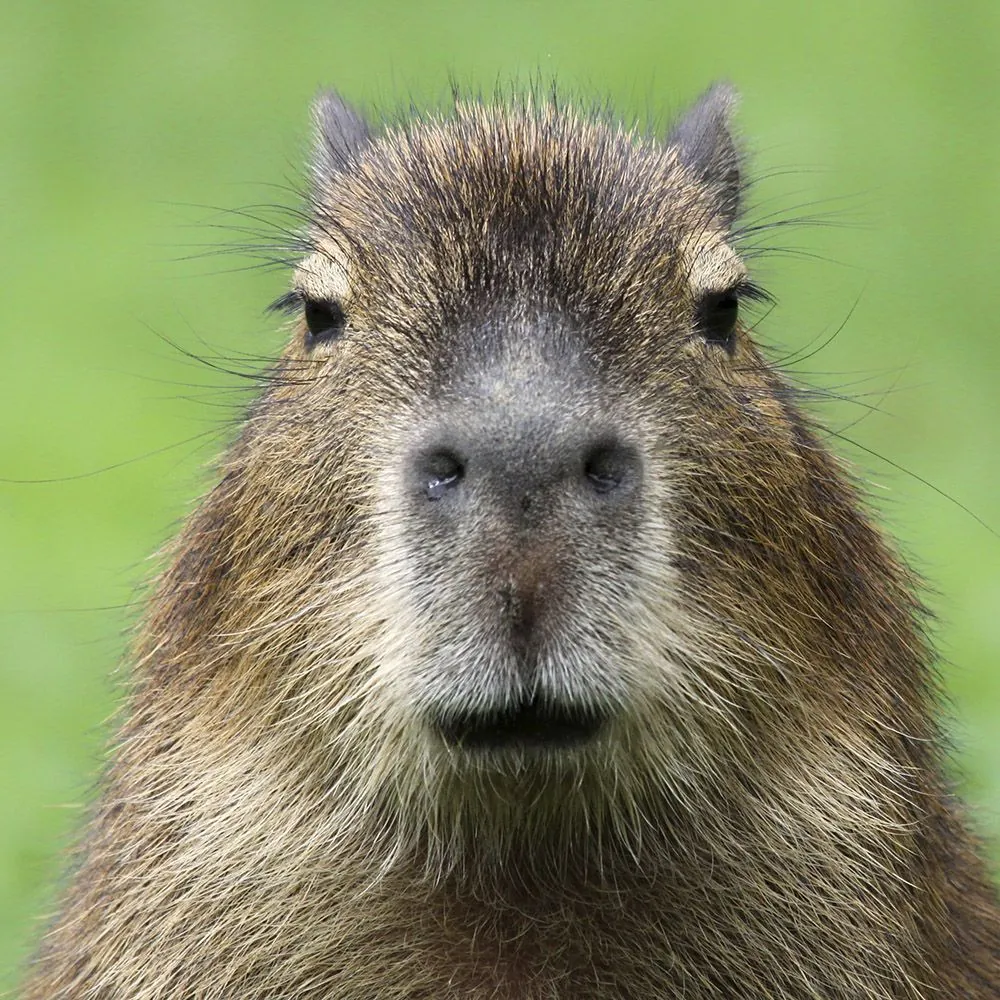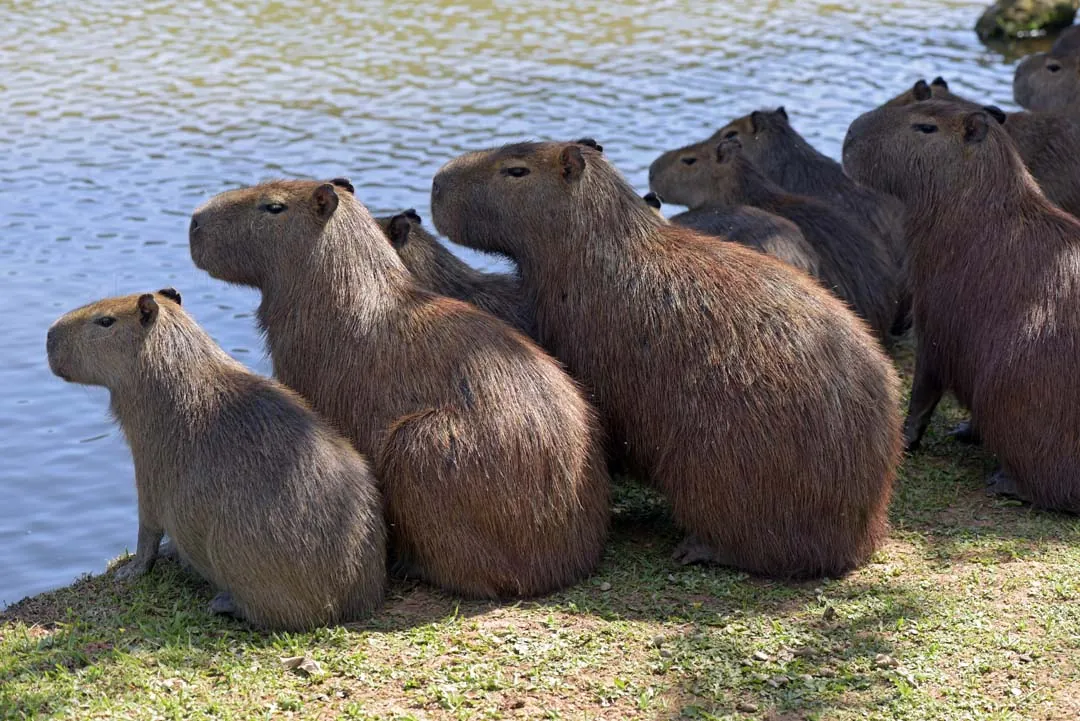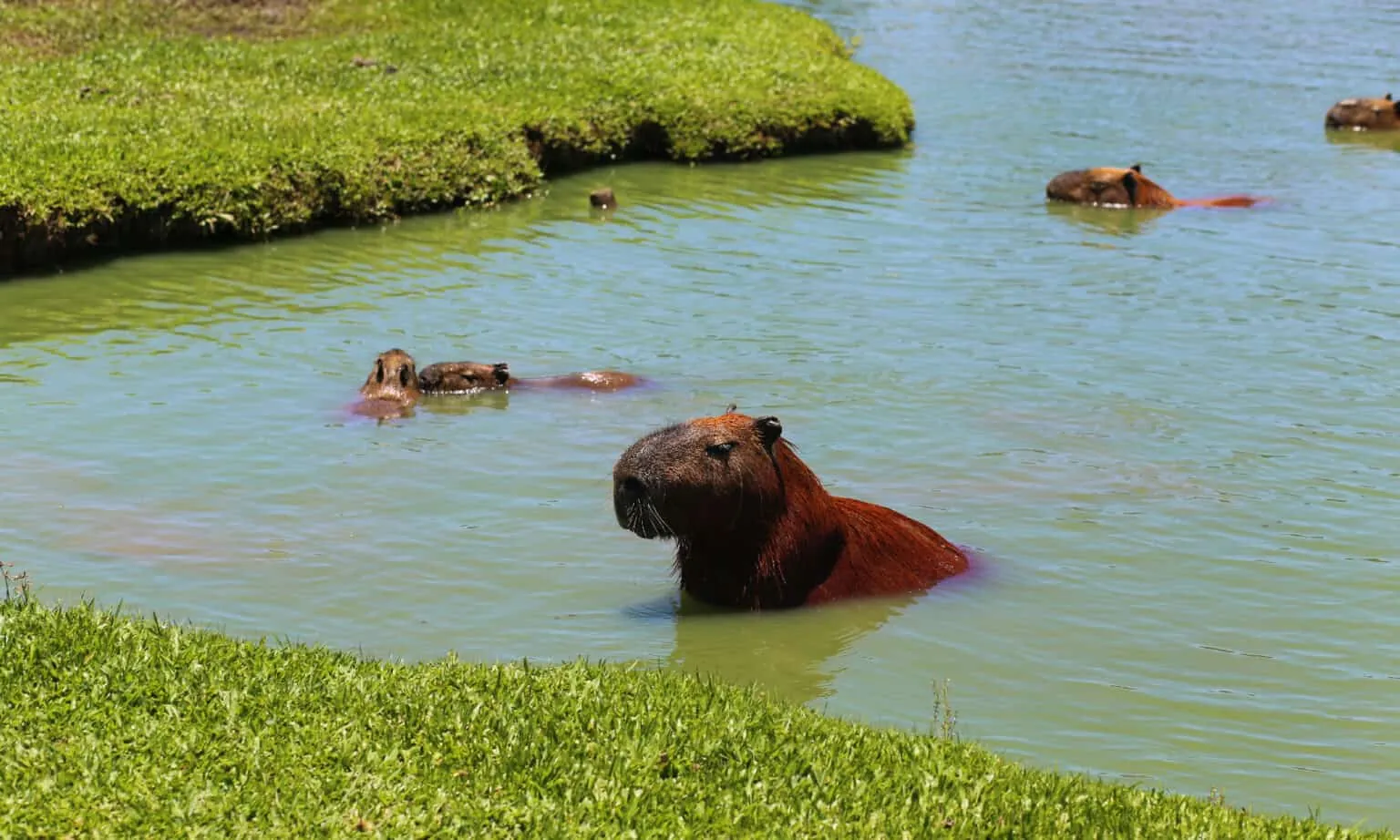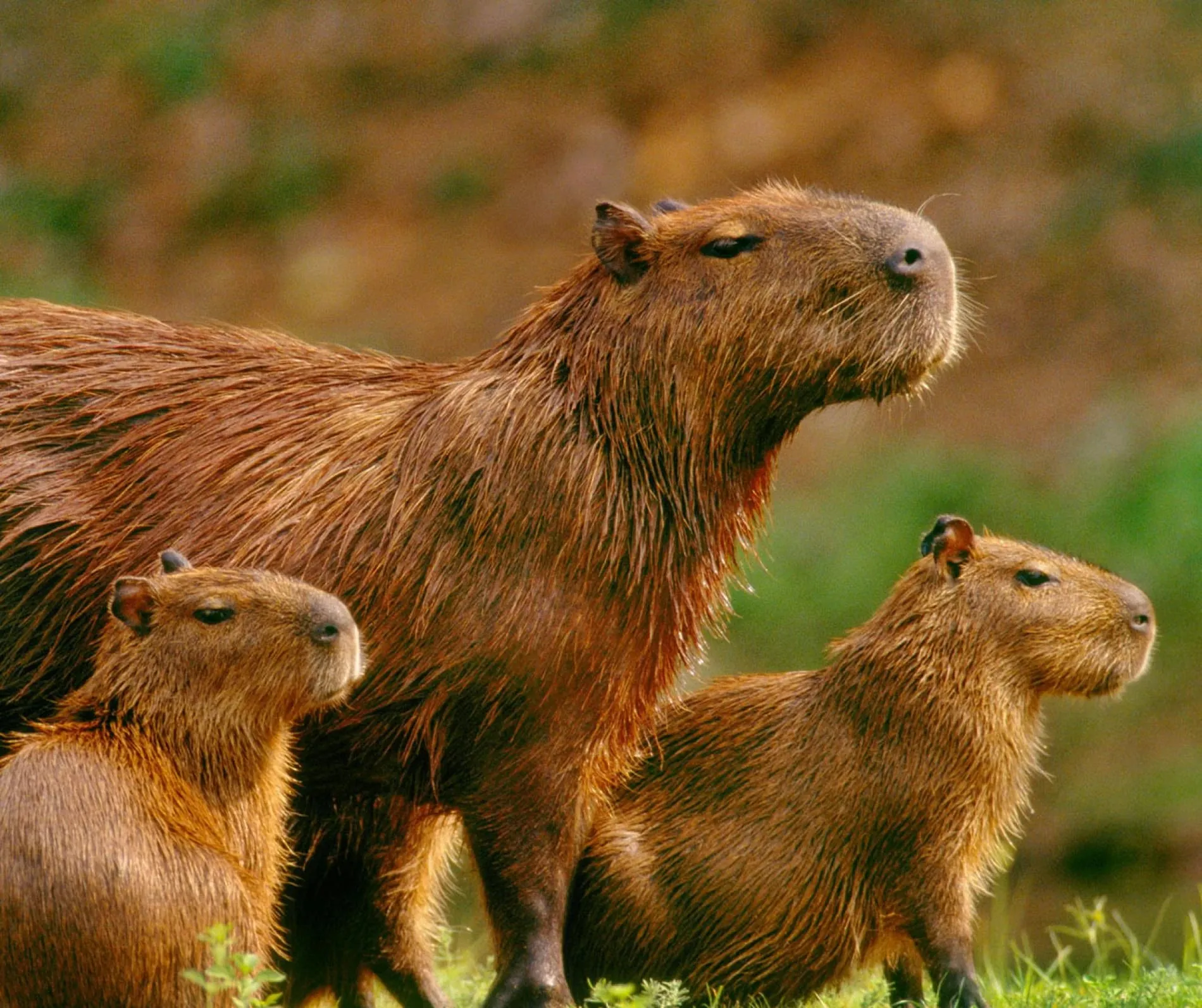Ever wondered about those giant guinea pig-looking creatures chilling by the water? That’s the capybara, my friend. And let me tell you, these bad boys are more than just oversized rodents. They’re nature’s ultimate chill masters.
What Exactly is a Capybara?

Alright, let’s break it down. Capybaras are the world’s largest living rodents. Yeah, you heard that right. These chunky boys can weigh up to 150 pounds and grow to be about 4 feet long. That’s like a medium-sized dog, but way cooler.
The Capybara Family Tree
Here’s where it gets interesting:
- Kingdom: Animalia (because, duh, they’re animals)
- Phylum: Chordata (they’ve got a backbone, unlike some people I know)
- Class: Mammalia (warm-blooded, fur-covered, milk-producing – the whole mammal package)
- Order: Rodentia (yep, they’re in the same club as mice and squirrels)
- Family: Caviidae (this is where they hang out with their guinea pig cousins)
- Genus: Hydrochoerus (which literally means “water pig” – how awesome is that?)
- Species: There are two main players in the capybara game:
- Hydrochoerus hydrochaeris (the OG capybara)
- Hydrochoerus isthmius (the lesser capybara, but don’t tell them that)
The Capybara Lifestyle: Living Large by the Water

Now, you might be thinking, “Okay, they’re big rodents. So what?” Well, buckle up, because capybaras are way more interesting than your average rat.
Habitat: Waterfront Property Only
These guys are all about that waterfront life. You’ll find capybaras chilling in:
- Swamps
- Marshes
- Rivers
- Lakes
- Flooded savannas
Basically, if it’s wet and grassy, capybaras are all over it. They’re like the spring breakers of the animal kingdom, always looking for the next pool party.
Social Butterflies of the Animal Kingdom
Here’s where capybaras really shine. These aren’t your loner rodents. Capybaras are social animals that live in groups of 10-20 individuals. Sometimes, they even form mega-groups of up to 100 capybaras. It’s like a non-stop capybara rave out there.
Capybara Superpowers: More Than Meets the Eye

Now, let’s talk about what makes capybaras truly special. These aren’t just oversized guinea pigs; they’re nature’s Swiss Army knives.
Aquatic Acrobats
Capybaras are semi-aquatic, which means they’re just as comfortable in water as they are on land. Check this out:
- They can hold their breath underwater for up to 5 minutes
- Their eyes, ears, and nostrils are on top of their head, perfect for peeking above water
- They have partially webbed feet, making them excellent swimmers
It’s like they’re custom-built for their waterfront lifestyle.
Digestive Dynamos
Here’s where it gets weird (but cool). Capybaras are herbivores, munching on grass, aquatic plants, and even tree bark. But here’s the kicker:
- They eat their own poop
Yeah, you read that right. But before you get grossed out, it’s actually a smart move. This helps them get more nutrients from their plant-based diet. It’s like nature’s version of a protein shake.
The Capybara’s Place in the Ecosystem

Capybaras aren’t just chilling by the water looking cute (although they do that really well). They play a crucial role in their ecosystems.
Nature’s Lawnmowers
Capybaras are grazing machines. They can eat up to 8 pounds of grass per day. That’s like mowing your entire lawn with your teeth. This grazing helps maintain the grasslands and prevents any one plant species from taking over.
A Buffet on Legs
Unfortunately for capybaras, they’re pretty tasty to a lot of predators. Jaguars, caimans, anacondas, and even harpy eagles see capybaras as an all-you-can-eat buffet. But hey, that’s the circle of life, right?
Capybaras and Humans: It’s Complicated
Now, let’s talk about the capybara-human relationship. It’s… interesting.
The Good: Capybara Tourism
In some areas, capybaras have become tourist attractions. People love watching these chill creatures do their thing. It’s like meditation, but furrier.
The Bad: Hunting Pressure
Humans hunt capybaras for their meat and hide. In some places, there are even capybara farms. It’s a bit of a bummer, but at least their populations are currently stable.
FAQs: Everything You Ever Wanted to Know About Capybaras
Q: Are capybaras dangerous?
A: Nah, they’re pretty chill. But like any wild animal, they can be dangerous if threatened. Just admire from a distance, okay?
Q: Can you keep a capybara as a pet?
A: Technically, yes, in some places. But should you? Probably not. They need a lot of space, water, and capybara friends. Your bathtub just won’t cut it.
Q: Do capybaras really get along with other animals?
A: Yep! Capybaras are known for being super chill with other species. There are tons of photos online of capybaras hanging out with birds, cats, and even crocodiles. They’re like the UN peacekeepers of the animal kingdom.
The Bottom Line: Capybaras Are Cool

Look, at the end of the day, capybaras are just really cool animals. They’re big, they’re chill, they’re social, and they’ve got some seriously impressive adaptations. From their unique classification as the world’s largest rodents to their semi-aquatic lifestyle, capybaras are a testament to nature’s creativity.
So next time you’re feeling stressed, take a page out of the capybara’s book. Find your own metaphorical swamp, gather your squad, and just chill. Because if there’s one thing capybaras have taught us, it’s that life’s too short to be anything but relaxed.
Remember, in the grand classification of life, we’re all just trying to find our place. The capybara’s found theirs – chilling by the water, munching on grass, and living their best lives. Maybe we could all learn a thing or two from these oversized, semi-aquatic rodents. Stay cool, stay chill, and keep on capybara-ing on.
